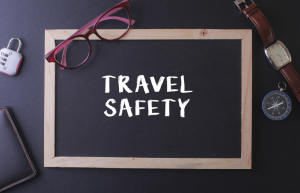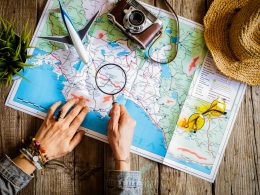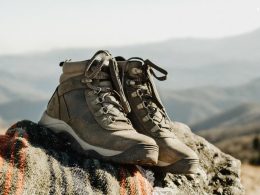Introduction
Traveling solo can be an incredibly rewarding experience. Whether you’re exploring a new city or hiking through remote trails, the freedom that comes with being on your own is unmatched. However, traveling alone does come with its own set of challenges and safety risks. In this article, we’ll explore essential safety tips for solo travelers to ensure your adventure is both thrilling and secure.
What is Solo Travel?
Solo travel refers to traveling alone, without the company of friends, family, or companions. It’s a growing trend among travelers who seek personal growth, self-discovery, and the opportunity to explore new cultures on their own terms. Whether you’re a seasoned traveler or a first-timer, solo travel allows you to immerse yourself fully in your destination, often in ways that a group cannot.
Why Solo Travel Can Be a Great Experience

Solo travel offers unparalleled freedom and flexibility. It gives you the opportunity to tailor your trip to your personal preferences, explore at your own pace, and meet new people from different backgrounds. But while the benefits are many, it’s essential to stay aware of the potential risks and take the necessary precautions to ensure your safety.
Understanding the Risks of Solo Travel
Traveling alone can expose you to certain risks. From navigating unfamiliar places to dealing with potential safety threats, it’s crucial to be prepared for any situation. Some common risks include theft, getting lost, and encountering situations where you might not have immediate support. By following safety tips and making informed decisions, you can minimize these risks and focus on enjoying your travels.
Key Solo Traveler Safety Tips

Here are some vital safety tips that every solo traveler should follow for a safer and more enjoyable trip.
1. Plan Ahead
Before embarking on your journey, spend time researching your destination. Look up details about the local culture, customs, and the safety situation. Find out about the safest areas to stay and the neighborhoods that may be less secure, especially at night. Also, check out the latest travel advisories and health guidelines for your destination. Planning ahead will give you peace of mind and help you avoid unexpected surprises.
2. Share Your Itinerary
When traveling alone, it’s essential to keep someone back home updated on your travel plans. Share your itinerary, accommodation details, and transportation plans with a trusted friend or family member. This way, someone always knows where you are, which adds an extra layer of security.
3. Keep Your Belongings Secure
One of the biggest concerns for solo travelers is theft. Pickpocketing is a common issue in crowded areas, so always keep your valuables secure. Invest in a money belt or a secure backpack with hidden zippers. Avoid carrying large amounts of cash and try to use a credit card or travel money card whenever possible. Make sure your phone, wallet, and passport are always within reach, especially in busy public spaces.
4. Stay Aware of Your Surroundings
When traveling alone, it’s crucial to stay alert. Always be aware of your surroundings, especially in unfamiliar areas. Pay attention to local customs, body language, and the people around you. Trust your instincts—if something feels off, it’s best to remove yourself from the situation.
5. Choose Accommodations Carefully
Where you stay can have a significant impact on your safety. Opt for well-reviewed accommodations in safe neighborhoods, preferably with 24-hour security. Consider staying in hostels, hotels, or guesthouses where there are other travelers. If you’re staying in Airbnb properties, check reviews thoroughly and look for hosts who have a solid reputation.
6. Use Technology for Safety
Technology can be a solo traveler’s best friend. Use travel apps to stay connected with family and friends, share your live location, and find your way around. Install safety apps like “Find My Friends” or a GPS tracker to allow your loved ones to track your movements. These apps can also help you find nearby emergency services and hospitals in case of a crisis.
7. Trust Your Instincts
If a situation doesn’t feel right or you feel uncomfortable in a particular place, trust your gut and leave. Whether it’s a street, a café, or even a person, your instincts can help you make better decisions.
8. Keep Emergency Contacts Handy
This includes local emergency services, your country’s embassy, and the contact details of friends or family members who can help in case of an emergency. Having this information readily available can be invaluable in a crisis.
9. Be Cautious With Alcohol
When traveling solo, it’s best to limit your alcohol consumption. Drinking too much can make you more vulnerable to accidents or theft.
10. Keep Your Documents Safe
Your passport, visa, and other important documents should always be kept in a safe place. Make photocopies of your passport and important documents in case they get lost or stolen. This will make it easier to report the loss and get replacements.
11. Use Public Transportation Wisely
Public transportation is often the easiest and cheapest way to get around in a new city. However, it can also be a hotspot for crime. When using public transportation, keep your belongings close, stay alert, and avoid traveling alone late at night. If possible, consider using reputable ride-sharing services like Uber or Lyft, which can offer a safer alternative.
12. Learn Basic Phrases in the Local Language
Knowing a few basic phrases in the local language can go a long way in helping you communicate and feel more comfortable. In case of an emergency, knowing how to ask for help in the local language could be crucial.
What to Do if You Get Lost

Getting lost is a common experience for many solo travelers. Here’s what you can do:
- Stay calm: Take deep breaths and assess the situation.
- Use your map or GPS: Open a map on your phone or use GPS to help you get back on track.
- Ask for directions: Approach a local shop or a safe public space and ask for help. Most people are willing to assist if asked politely.
- Find a safe place: If you’re unsure of your surroundings, head to a well-lit public place, like a café or hotel lobby, until you can figure out your next move.
Table: Quick Solo Traveler Safety Checklist
| Tip | Action |
|---|---|
| Research | Check travel advisories and local customs before departure. |
| Secure Documents | Use a money belt or pouch and keep copies of important documents. |
| Stay Connected | Share your itinerary with friends or family and check in daily. |
| Choose Safe Accommodation | Read reviews and pick well-located, secure places to stay. |
| Mind Transportation | Use trusted transportation services and travel during daylight. |
| Trust Your Instincts | If something feels wrong, leave the situation immediately. |
| Stay Healthy | Carry water, eat well, and bring a first aid kit. |
Final Thoughts on Solo Travel Safety
Solo travel is an exciting and fulfilling way to explore the world. By following the tips outlined in this article, you can reduce the risks and enjoy your adventures with peace of mind. Planning ahead, staying aware, and using common sense will ensure that your trip is not only memorable but also safe.
Call to Action:
Ready to embark on your solo adventure? Start by planning your next trip with the right safety measures in place. Don’t forget to pack smart, stay alert, and trust your instincts. Safe travels!











